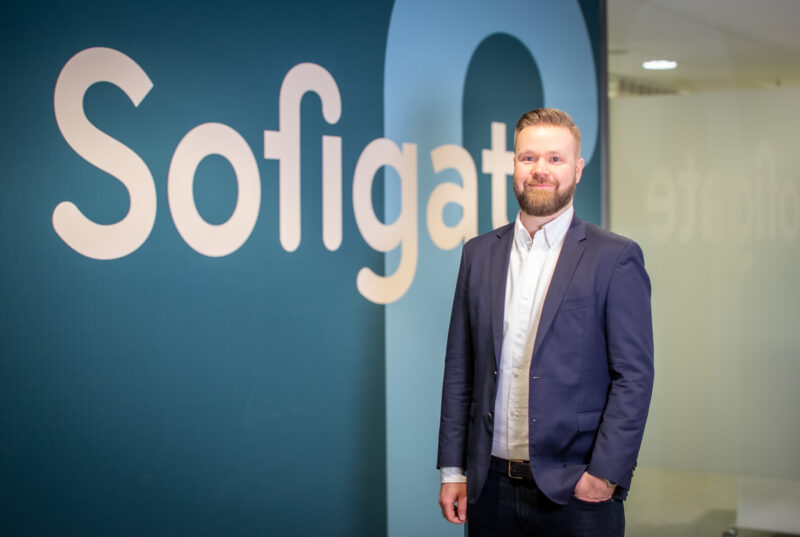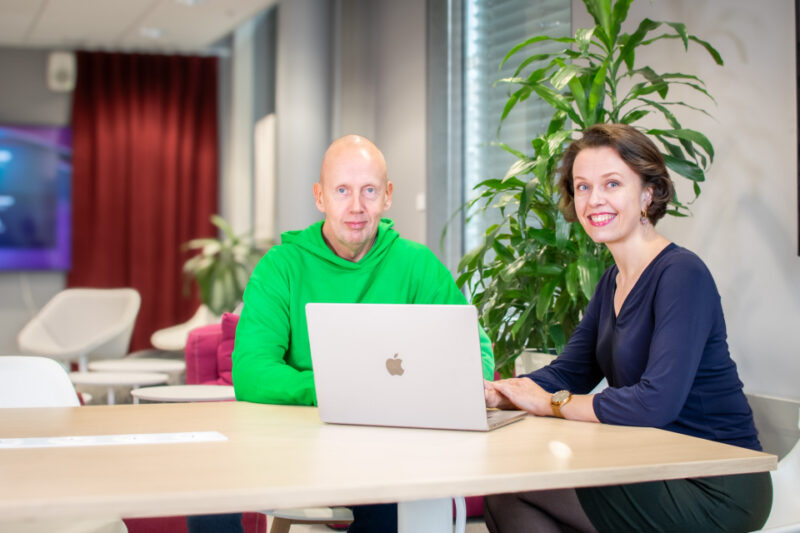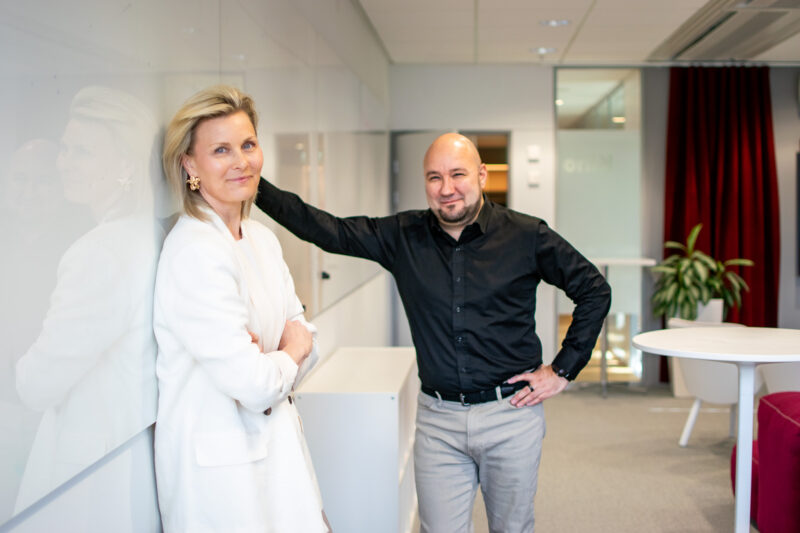A small facelift or a proper renewal? – Set your aim high enough in your next IT project
Is it truly possible to execute an IT project in a way that enhances the organisation’s productivity? Absolutely, says Business Director Jussi Suominen in his blog.
Let’s say that your house no longer meets your requirements. There’s not enough room, the floorplan is impractical, and you’ve never really enjoyed the view from your bedroom window. You can always redecorate, update your kitchen appliances, and even build a new window, but these changes won’t bring you more room and the view from your window remains the same.
We all understand that in this example there are only two real options: expanding the house or moving into a new one. Any other change results in just a small facelift. The same logic can be applied to the corporate world. When your IT systems fall short, you’re faced with a choice: is it better to implement a small facelift or a complete renovation? Unfortunately, companies often settle for minor updates, even when more significant changes could produce far better results.
Are we Finns guilty of being too cautious?
The example above is something that we at Sofigate have also noticed. Companies are too careful in their technology investments. Instead of switching platforms, they end up finetuning the existing solution. Decisions are made based on short-term needs, focusing on individual business units rather than the bigger picture. And artificial intelligence? It’s often not even on the radar.
In the fall of 2024, we took a closer look at the theme by conducting a market study called Looking for a Leap in Productivity*. We had a theory: there’s a major productivity leap hiding in Finnish companies and it can be uncovered by being bolder in IT projects.
The research confirmed our hypothesis. As many as 41 % of the respondents agreed that no real progress was achieved either in productivity or performance after a technology project was finished.
Interestingly enough, the respondents didn’t see the projects as failures. As long as the project had stayed on schedule and in budget, it didn’t seem to matter that the actual results were modest at best.
No reason to pull the brake
Let’s call a spade a spade: Finnish companies like to play it safe. Sometimes it makes sense to be cautious, but if the premise of a development project is to be careful and play it safe, the bar is already set too low.
Too often we’re content with just improving the current process, instead of aiming to lift the productivity level of the whole organisation. This mindset also significantly limits the use of, for example, artificial intelligence. AI is too often seen just as an assistant, when in fact it has much wider potential.
In a time when technology moves forward at an ever-increasing speed, there is no room for playing it safe. The focus should be firmly set on the future.
Raise the bar and the results will follow
So, what’s the solution?
Simple: raise the bar and set ambitious goals for IT projects from the start. By aiming to enhance value and increase productivity, the entire project will be taken more seriously.
Is it really that simple? Not quite. True change requires careful planning, understanding of needs, mapping out processes, and taking the whole value chain into consideration. The use of, for example, AI agents can significantly enhance both business processes and procedures. By increasing automation, an organisation can double its productivity while freeing up personnel’s resources and time for more important tasks.
Remember at least these
- Look at the big picture. IT is no longer just a support function, but the backbone that every member of the organisation needs to generate true value. The impact of a well-functioning backbone can be felt far beyond the organisation itself.
This is why, when setting the goals for the project, you need to look at end-to-end processes. How do they work from the employee experience point of view? How does technology integrate with other processes within the organisation, and how are we taking people into consideration? Even internal processes eventually impact the customer experience. - Artificial intelligence, AI… AI agent? AI is in a key position when it comes to boosting productivity. It is more important than ever to get on board the AI train now, rather than later. When planning an AI strategy, it’s also crucial to assess whether the bar is set high enough and if the focus is on the future. For example, the company could benefit from using AI agents instead of traditional AI.
AI agents are autonomous software programs that can be set up to manage entire processes from start to finish. When integrated with business platforms, an AI agent can use company data in its decision-making process. Automating processes through AI agents frees up employees’ time, allowing them to focus on strategic tasks. In fact, I believe this is the key to ensuring that every euro invested in AI delivers a return to the company. - Always align project goals with your company’s strategic objectives. If your company aims to be more productive, you need to determine how technology and AI can support this goal. If the objective is growth and reaching international markets, consider technology from the perspective of scalability. A system that only meets your current needs isn’t necessarily the best possible investment. Remember that the success of your project is measured by setting the right goals. Can a project truly claim success if it doesn’t generate value?
- Think beyond your organisation. Eventually, the most concrete value a company generates comes through its customers. This is why a successful project must consider the customer as well. You should set your goals and metrics with an external perspective. When a project creates value for the customer, for example, by shortening production delivery times, it can be deemed a success.
And finally, it’s good to remember that this doesn’t require deep knowledge of technology. Instead, you need to build a strong ecosystem of partners with the expertise and know-how to support and guide the change.
When setting the goals, leadership can use methods that don’t require technical expertise. A good example of this is the Business Technology Standard** used by companies such as Sofigate. It provides, among other things, ready-made, proven models for mapping out capabilities, roles, and activities.
Don’t settle for enhancing – renew!
Technology investments are an excellent opportunity for an organisation to critically assess its processes and operations, while also focusing on the future. This is an opportunity not to be missed. A well-planned and goal-oriented technology project can provide a company with a significant competitive advantage, especially now that AI is still finding its place within organisations. Not to mention, it can help increase value and productivity.
More efficient processes, happier customers, and a dramatic rise in productivity are possible for everyone who dares to think of AI as more than just an assistant. In the end, it is not about streamlining individual tasks and roles, but about a fundamental renewal of processes and ways of operating.
This is the first part of the blog series diving deeper into Sofigate’s market study “Looking for a Leap in Productivity”. Read the other parts of the blog series:
A one-team project or a cross-functional collaboration? – This is the recipe for a productivity leap
From inclusion to true participation – Put people at the heart of your IT project
About the author:
Jussi Suominen is a Public Sector Solutions Business Executive at Sofigate. In his work, he constantly encounters areas for improvement in organisations, similar to those identified in the “Looking for a leap in productivity” market study.

*The “Looking for a Leap in Productivity” market study was conducted by Sofigate and completed in October 2024, N=32.
Download the “Looking for a Leap in Productivity” market study report.
**The Business Technology Standard is an internationally advanced open-source framework model published by the Finnish not-for-profit Business Technology Forum, freely available for anyone to use.
Read more about the Business Technology Standard.


